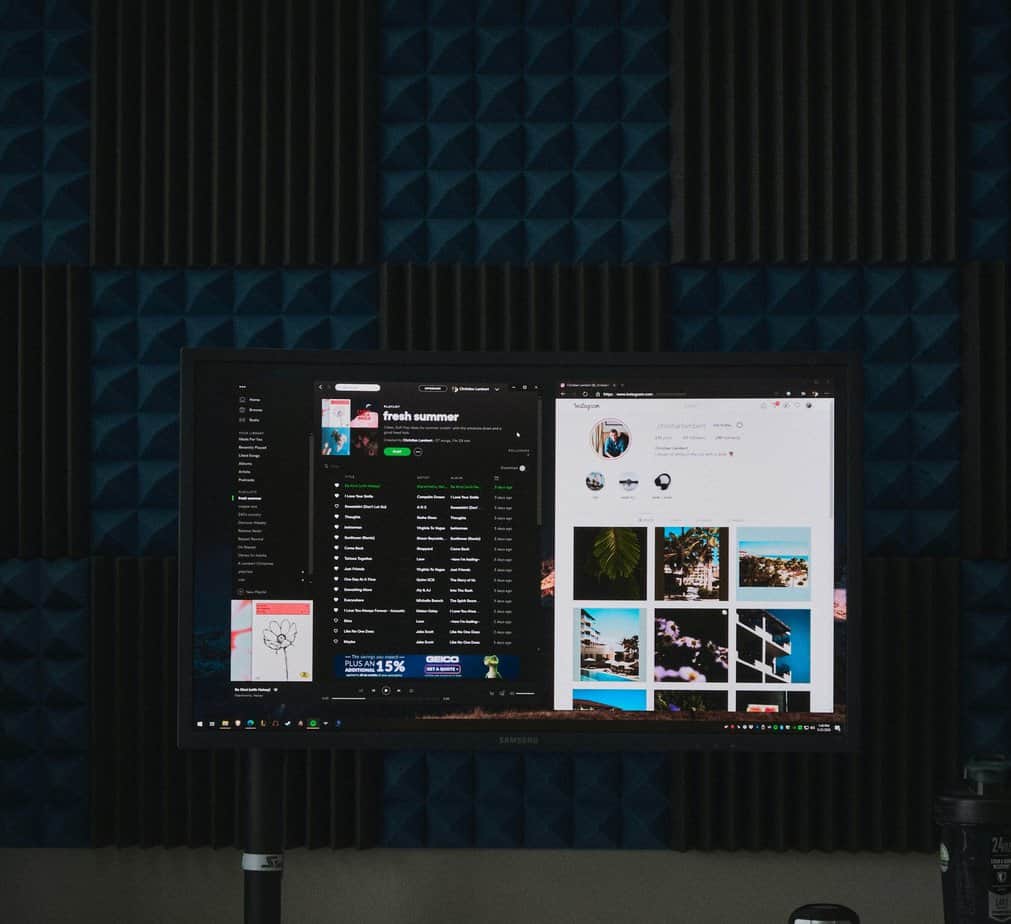
As the owner of an apartment or house with thin walls, you know what it’s like to hear everything your neighbours do. Whether they’re watching TV at full volume or arguing about politics, you can hear every word and often can’t escape the sounds no matter how high you turn up your own TV or radio. If this is driving you crazy and interrupting your focus on work and play, you might want to try a sound panel for walls, also known as an acoustic wall panel.
Though they come in a variety of different shapes, sizes, and styles, sound absorbing wall panels consist of several layers of fabric that can soak up unwanted sounds. The thickness of each layer determines how sound-proof it is. Many sound-absorbing acoustic wall panels are made with layers of acrylic fabrics, mineral wool, open-cell foam (e.g., Rockwool), etc., on both sides—and sometimes three or more sides—of a wooden frame.
While sound-absorbing acoustic fabric panels tend to be smaller than their sound-absorbing acoustic wood wall panel counterparts, there’s no reason why you couldn’t cover an entire room with one if your space requires it. Sound absorbing wall panels can be installed as standalone pieces or alongside other types of sound absorption material like curtains and rugs to create an acoustically treated room.
Sound-absorbing wall panels act in a similar way to soundproofing materials. They absorb sound by converting it into heat, which, in turn, makes them warmer than their surroundings. When sound waves hit these sound-absorbing acoustic wall panels, they cause the movement of air particles around these bubbles.
Since hot air is less dense than cold air, these small movements of air create more pockets of empty space around each bubble. This causes an increase in pressure on one side of the panel, while there’s a decrease on another side. The difference in pressure creates friction between molecules, which generates heat.
So when you hear something like your neighbour’s dog barking or your kids watching TV at full volume through paper-thin walls, those sound waves are being converted into energy that warms up your acoustic fabric wall panels!
Soundproofing materials are most effective in rooms where sound is being transmitted from one area to another, or from an exterior source. Use soundproofing materials in places like a recording studio, home theatre room, or child’s bedroom—any place where sound needs to be blocked out. Soundproofing materials can also come in handy if you want to build a recording studio at home or use acoustic wood wall panels as living room wall decor. It may seem difficult to block out noise, but with acoustic fabric wall panels, it can be done. The good news is that your entire family will benefit when you take steps to reduce noise pollution in your home.
If you’re building a new home or renovating an existing one, consider adding soundproofing wall panels. These sound dampening materials can really help reduce noise pollution at home. Here’s how an acoustic wall panel work.
Acoustic wall panels act as barriers that absorb and block noise waves to keep unwanted sounds from penetrating your space. These sound-absorbing materials are inexpensive, easy to install and available in many different colours and finishes—so you can rest assured knowing they’ll look good too!
Soundproofing your office, home theatre or music room doesn’t have to be complicated or expensive. All it takes is some good planning, consultation, and of course some good soundproofing wall products from Pro-Coustix. As a leading supplier of soundproofing products, Pro-Coustix can help you set up a sound suite on any budget.
main photo: unsplash.com/Christian Lambert